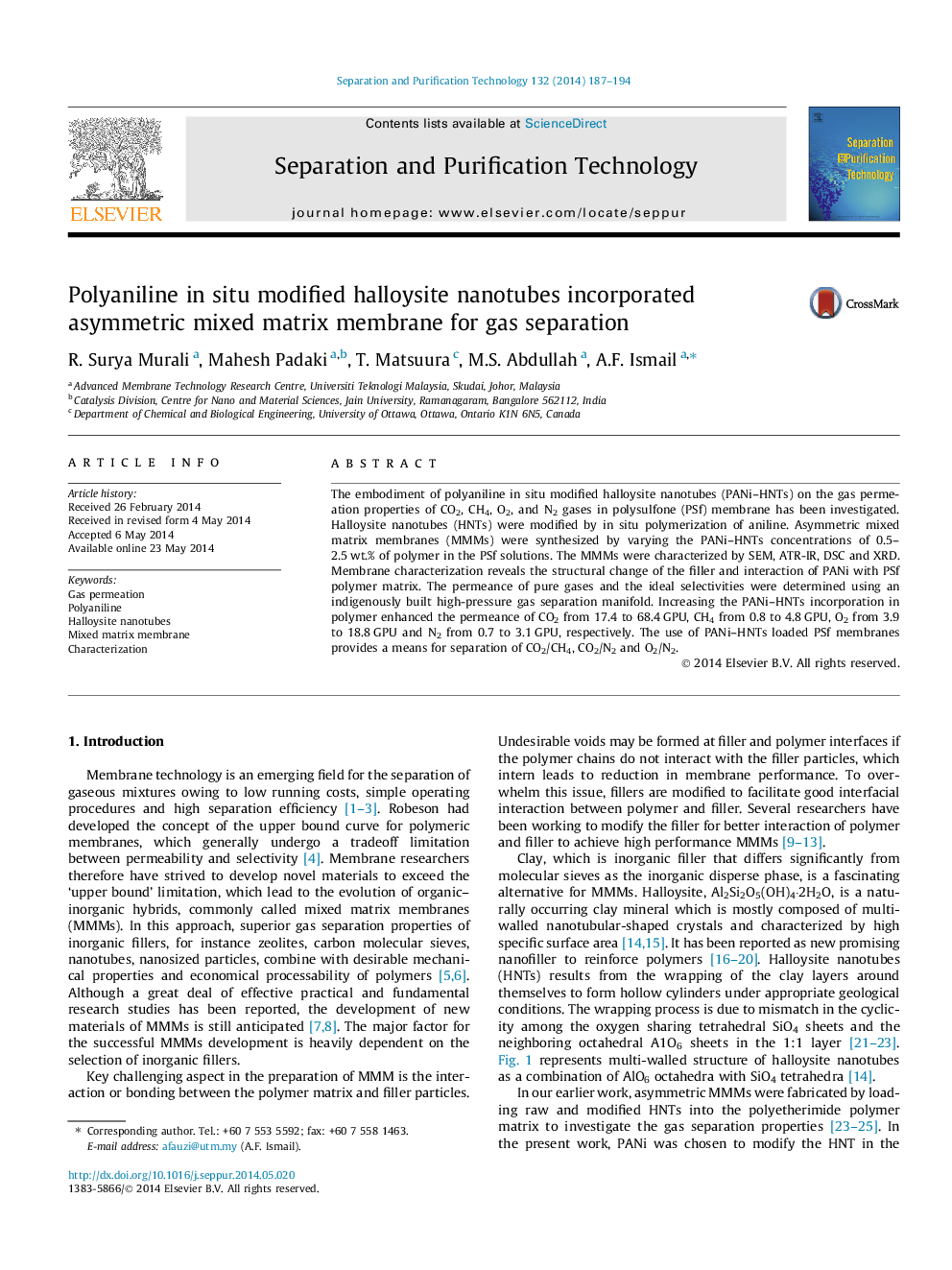| Article ID | Journal | Published Year | Pages | File Type |
|---|---|---|---|---|
| 641009 | Separation and Purification Technology | 2014 | 8 Pages |
•Polyaniline in situ modified halloysite nanotubes were synthesized.•PANi–HNTs loaded polysulfone mixed matrix membranes were prepared.•Performance of membranes was studied with pure CO2, CH4, O2 and N2 gases.•PANi–HNT/PSf membranes showed better gas permeation properties to those of PSf.
The embodiment of polyaniline in situ modified halloysite nanotubes (PANi–HNTs) on the gas permeation properties of CO2, CH4, O2, and N2 gases in polysulfone (PSf) membrane has been investigated. Halloysite nanotubes (HNTs) were modified by in situ polymerization of aniline. Asymmetric mixed matrix membranes (MMMs) were synthesized by varying the PANi–HNTs concentrations of 0.5–2.5 wt.% of polymer in the PSf solutions. The MMMs were characterized by SEM, ATR-IR, DSC and XRD. Membrane characterization reveals the structural change of the filler and interaction of PANi with PSf polymer matrix. The permeance of pure gases and the ideal selectivities were determined using an indigenously built high-pressure gas separation manifold. Increasing the PANi–HNTs incorporation in polymer enhanced the permeance of CO2 from 17.4 to 68.4 GPU, CH4 from 0.8 to 4.8 GPU, O2 from 3.9 to 18.8 GPU and N2 from 0.7 to 3.1 GPU, respectively. The use of PANi–HNTs loaded PSf membranes provides a means for separation of CO2/CH4, CO2/N2 and O2/N2.
Graphical abstractHypothetical view of (a) HNT, (b) PANi–HNT and (c) PANi–HNT surrounded by PSf polymer chains.Figure optionsDownload full-size imageDownload as PowerPoint slide
